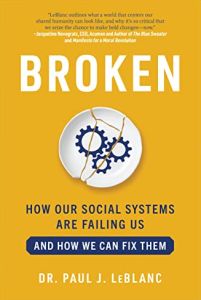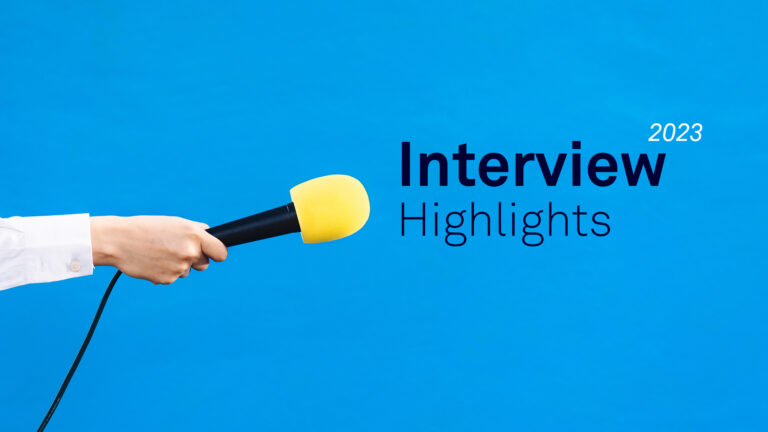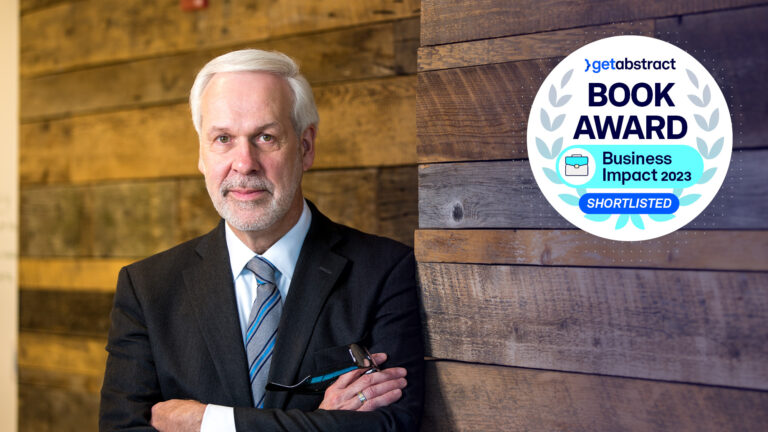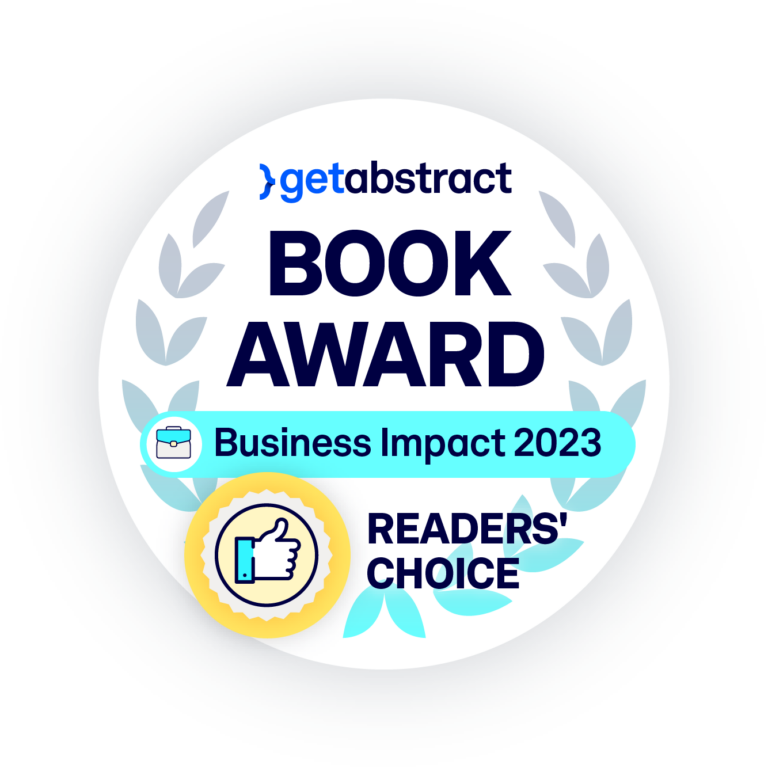Join getAbstract to access the summary!

Join getAbstract to access the summary!
Paul LeBlanc
Broken
How Our Social Systems Are Failing Us and How We Can Fix Them
Matt Holt Books, 2022
What's inside?
Organizations must put people at their center to meet burgeoning social problems.
Recommendation
University president Paul LeBlanc offers a sweeping yet detailed indictment of US institutional failures to meet human needs, and issues a clarion call to repurpose organizations to better serve humanity. LeBlanc outlines how to put people at the center of ailing social institutions and business models, including the creation of more co-operatives and public benefit corporations. He also advances a pioneering employment scheme to address AI disruption: a “human work initiative” to match people with human-focused work that can’t be replicated by machines.
Take-Aways
- Social systems in the United States are failing the people they’re meant to serve.
- Organizations that meet people’s innate needs for recognition and hope create better outcomes.
- Burgeoning social problems require humanely scaled solutions that prioritize people over bureaucracy.
- Conventional thinking about the purpose of business often produces dehumanizing results.
- Co-operatives and public benefit corporations offer innovative examples of human-centered business models.
- A “human work initiative” would match people with jobs that serve human needs and can’t be performed by machines.
Summary
Social systems in the United States are failing the people they’re meant to serve.
Social institutions are falling short of their important mission to serve humanity. The United States spends astronomical sums on higher education, health care and criminal justice, for example. Yet those systems continue to come up short. Education fails the students it’s meant to educate; health care fails to care for patients; and criminal justice fails to rehabilitate prisoners.
In K-12 education, the United States spends the most per pupil among developed countries, yet outcomes lag behind. In higher education, the United States spends about $632 billion a year, yet still manages to saddle students with $1.7 trillion in debt – the highest debt load in any industry other than mortgages. And higher education still remains out of reach for most Americans. Roughly 60% of those over 25 don’t hold a university degree.
“When systems fail the people they are meant to serve, it’s almost always because of a failure of human values more than any inherent attribute of the system.”
The same pattern reveals itself in health care. The United States spends more per person than most other developed nations, yet health outcomes prove relatively poor by comparison. Collectively, about $3.8 trillion is spent on health care annually, yet 28 million Americans remain uninsured.
Those who do have insurance end up paying more for prescription drugs than in any other country. Considering that 40% of Americans can’t afford an unexpected $400 in expenses, high prescription drug prices mean many citizens go without necessary medications.
Although the United States makes up only 4.4% of the world’s population, it has locked up 21% of the world’s prisoners. To keep them behind bars, the criminal justice system spends about $182 billion per year. Only a tiny portion of that money goes toward rehabilitation.
For example, in the state of California, about 4% of the $13.6 billion spent annually on the correctional system goes toward rehabilitating prisoners. The rest is spent on warehousing and punishment. The result: 47% of inmates return to prison within three years at an annual cost of $39,000 per prisoner. And the US criminal justice system executes more people than any other developed country in the world.
Organizations that meet people’s innate needs for recognition and hope create better outcomes.
Higher education, health care and criminal justice systems come up short, in large part, because they lack focus on the emotional and relational needs of students, patients and prisoners. People have three fundamental needs: to feel recognized; to hope; and to tell their stories.
Social systems that meet people’s needs for recognition and respect tend to create better outcomes. For example, doctors who take the time to talk with their patients face fewer malpractice lawsuits, even when they make mistakes. Lack of respect triggers feelings of shame, and evidence suggests its absence is one of the major causes of violence in prisons.
“Time and effort – always precious commodities for any busy person, whether a parent, a teacher or a CEO – is the magic ingredient in mattering.”
A poverty of hope exists alongside economic poverty in the United States. Suicide rates among 10- to 34-year-olds skyrocketed between 2007 and 2018; in 2018, suicide became the second leading cause of death among this age group. Hopelessness also reveals itself in low levels of job satisfaction. According to a 2019 Gallup Poll, only 30% of US workers find their jobs engaging, and that number drops to 15% globally.
Through a mix of financial, emotional and mental support, organizations can help people overcome hopelessness and develop their potential. One powerful way to show support is through storytelling – by gathering, listening and sharing personal stories with trustworthy people.
Some stories should affirm. These aim to highlight excellence, raise morale and inspire. In an organizational setting, authentic stories help convey a company’s values, mission and vision.
Uplifting stories, however, aren’t enough. Challenging stories need to be shared, as well. They can help organizations identify and address problems and break free from the constraints imposed by limiting narratives. Gather and share uncomfortable stories to mitigate the risks of oversimplifying problems.
Burgeoning social problems require humanely scaled solutions that prioritize people over bureaucracy.
Solving social problems in the United States requires scaled solutions: Tens of millions of Americans lack health insurance, don’t receive adequate education or suffer from mental health challenges. But the process of scaling solutions to systemic problems often results in dehumanizing the people most in need of support.
Whether in education, health care or criminal justice, people in the system end up mattering less than the system itself. The bureaucratic need to be as standardized and efficient as possible often overwhelms the needs of people. Easy-to-quantify metrics, such as tests and surgeries, take precedence over harder-to-measure ones, like conversational breakthroughs and counseling outcomes.
“Successful scaling begins with making more, not less, time for human relations.”
Institutions need to scale humanely. Hire more support staff and invest in human relationships to overcome dehumanization as organizations grow. This approach proves successful in higher education. Invest in advising students to improve their commitment to education.
This method also works in health care. The addiction recovery program, Groups Recover Together, employs “care navigators” who help patients find housing, food, primary care physicians and other resources. In the process, the program develops a holistic understanding of each patient. This approach has led to opioid addiction recovery rates two to three times the industry average. Health care company One Medical employs health coaches to improve patient outcomes. They take the time to learn about patients in a holistic way that many doctors can’t during short consultations.
To keep people at the center of systemic scaling efforts, organizations can look to mission statements, budget incentives and technology. Mission statements can help organizations keep their activities and finances aligned with their purpose. Look at an organization’s budget to uncover what it values and rewards. Technology can help an organization meet its transactional needs more efficiently, freeing up staff to address human needs more holistically and compassionately.
Conventional thinking about the purpose of business often produces dehumanizing results.
Conventional businesses have one primary responsibility: to maximize short-term profits for shareholders. Although the 2019 Business Roundtable sought to rethink this paradigm, it still wields enormous influence. It leads to what Guild Education CEO Rachel Carlson calls “short-termism”: expectations of quarterly increases in shareholder return. When applied to social systems, conventional business thinking often leads to poor long-term outcomes.
“If maximizing profits is the primary responsibility of the system and the people who lead it, the people served in that system are often secondary.”
The for-profit University of Phoenix, for example, outperformed nonprofit colleges in providing degrees for working adults pursuing in-demand jobs. However, when it became a publicly traded company, the university’s investors wanted to maximize short-term shareholder profit. As a result, it gained a notorious reputation for poor educational outcomes and inappropriate behavior that caught the attention of regulatory agencies. At the peak of its activities, the University of Phoenix and other for-profit colleges accounted for 12% of university enrollments – and half of all loan defaults.
Status quo business incentives also drive poor outcomes in for-profit prisons. According to a 2018 Sentencing Project report, states that host private prisons have much higher incarceration rates than the national average. Private prisons also have higher assault rates, double those of publicly managed prisons. In an effort to reduce expenses, private prisons hire fewer staff and offer less training. As a result, they have higher turnover. And private prisons prop up dehumanizing public policies – such as mandatory minimum sentencing – that lead to even more people being incarcerated.
Co-operatives and public benefit corporations offer innovative examples of human-centered business models.
Conventional for-profit business can innovate social systems, as the University of Phoenix initially demonstrated. However, status quo business thinking fails people over the long term.
Enter alternative business models. The public benefit corporation, a new kind of business entity available in 35 states, legally enshrines a social mission that board members are required to uphold. Beloved companies like Patagonia and Ben & Jerry’s have adopted this legal structure. The board of directors must legally consider not only shareholder value but also the social impact outlined in the company’s charter. They must also account for the interests of stakeholders impacted by the organization’s conduct.
“Globally, co-operatives routinely outperform conventional corporations, operating with better outcomes and lower operating costs while sharing the wealth more equitably among those they serve and those who work within them.”
Co-operatives, or co-ops, offer another model for human-centered business. No longer the sole domain of health food aficionados, co-ops operate today in manufacturing, health care, child care and many other industries. In a recent evolution, platform co-operatives have emerged. The Drivers Cooperative in New York City, for example, operates as a competitor to Uber, where drivers own the company and the technology it uses. Workers have a voice in the company’s direction and earn 20%-30% more than Uber drivers.
A “human work initiative” would match people with jobs that serve human needs and can’t be performed by machines.
Automation is poised to put millions of Americans out of work – one in four workers, according to a 2021 McKinsey report. Autonomous vehicles alone may displace upwards of 3.5 million truck drivers within a decade; in the financial services and insurance industries, 7.2 million workers face the same risk. Universal Basic Income is commonly touted as a solution to widespread job loss from automation. Proponents argue Universal Basic Income would cover the essentials that people need to survive: rent, food and other necessities.
A human work initiative would offer an alternative solution. Unlike Universal Basic Income, where the government would cut a check to cover people’s basic needs, a human work initiative would be designed to match workers with socially conscious jobs, including teachers and classroom aides, public safety officers and nursing home and hospital staff. These jobs require a level of compassion and empathy that’s hard to automate.
“Our needs are so massive and our systems so broken that we can only fix them by flooding them with people who are paid enough, cared for enough, supported enough – dare I say loved enough – to extend all of that care to those who need it the most.”
The benefits of a human work initiative are three-fold. First, everyone who loses a job to automation would be able to find work that pays a living wage. That wage is scalable, so those with more advanced skills or training could expect to earn more. The entire economy could benefit from people’s increased purchasing power and higher consumer spending. Second, communities will improve, as mental health services, nursing homes, community centers and city streets are flooded with human support. Third, it would provide people with meaningful work.
A human work initiative, like Universal Basic Income, needs funding. A variety of innovative options exist to find those funds. Robots could be taxed. Corporate tax could be restructured so that the more human employees a company has, the less tax it pays. Some funds from safety net programs – currently around $390 billion in the United States – could be reallocated to the initiative.
In addition, crime reduction and public health improvements could add to the savings. And instead of expanding government bureaucracy, human work initiative funds could flow through a mix of co-ops, public benefit corporations and conventional businesses to ensure each model’s strengths are maximized.
About the Author
Paul LeBlanc is president of Southern New Hampshire University, the largest nonprofit provider of online higher education in the United States. He is a recipient of the prestigious TIAA Institute Hesburgh Award for Leadership Excellence in Higher Education and has served on the Board of the American Council on Education. LeBlanc is the author of Students First: Equity, Access and Opportunity in Higher Education.
This document is restricted to personal use only.























Comment on this summary